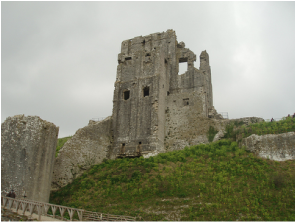January 2016 workshopAs a reader, I skip mass amounts of description in long narrative form. Others read each juicy detail and want more. Where's the balance between too much setting description and not enough? When you write, try to leave out all the parts readers skip.”  Part of this is understanding your readers. What is your demographic? In my experience, science fiction and fantasy novels include way more setting detail than thrillers. Neither is right or wrong, but rather common conventions for your preferred storytelling type. The best way to determine this is to read frequently in the genre in which you write. In our January workshop at the 21st Century Writers group, we had a lively discussion regarding setting. We started with Four Ways to Bring Setting to Life by Moira Allen. The first recommendation was to "reveal setting through motion." If a writer has a reader like me, who sees a huge chunk of description and jumps right past it, they're tricking me by breaking the description up. The writer is showing movement. If a waitress is delivering drinks to the galaxy ala Star Wars Cantina scene, the writer could show the waitress maneuvering past a creature with 8 hands or tripping over tentacles. Action allows the setting to filter into the story organically. Another recommendation was to "reveal setting through a character's level of experience." In other words, the world as seen through the eyes of the character is different if the point of view character is a hardened galaxy waitress who no longer notices funky tentacles or a newby Jedi who has never left his rural planet. What does the character notice? What does the character NOT notice? And perhaps most importantly, why does it matter? I think this is where many writers fall into trouble. As writers, we love our worlds, but if the three and a half paragraphs of detailed setting have no bearing on the plot or the character, why include it? As an example from our discussion, a hardened police detective probably wouldn't notice many "extra" details while eating lunch at a cafe. It's whatever to him. A place to eat and nothing else, but put that same detective at a crime scene, and they notice EVERYTHING. And the reader wants to read these paragraphs because somewhere embedded in the setting details are clues to the overarching mystery. A third suggestion from the article was to "reveal setting through the mood of your character." A castle ruin takes on different details if the heroine is on a day hike versus lost in a creepy old ruin. Word choice is affected. A movie example of this idea is Hoodwinked. In the movie, the same story is repeated for four different characters: little red riding hood, the bunny, the huntsman, and the wolf (oh, and maybe Grandma, too, it's been awhile). Each character is part of the story, but they have very different perceptions of the setting. It's why sometimes when you're writing a scene and it isn't working, you should consider writing from another character's point of view. It can significantly alter the mood and pacing of the story. A final idea from this article was to "reveal setting through the senses." I highly encourage you to read the source document for this section, but a part that really resonated with our discussion was the idea that the senses we include have different effects on the reader's emotions. For instance, "When we describe a scene in terms of visual inputs, we are appealing to the reader's intellect. Emotions, however, are often affected by what we hear." As readers, we view the world through our senses. If we're walking and suddenly smell grandma's barbecue sauce, it evokes an emotional response, say disgust since grandma couldn't cook if her life depended on it. The same is true of our reader. By showing the setting through the senses of the point of view character, we allow the reader to see the soul of the character, creating someone who is complex and interesting. ApplicationThat's great, but how do we incorporate that into our writing? For this, I took a look at 21 Writing Prompts for Setting a Scene in Your Novel by Suzannah Windsor Freeman. For our purposes in the workshop, we read through the list of 21 items and answered as many as we felt called to answer, and then wrote or rewrote a scene in our current WIP, adding setting details we learned from the Moira Allen article. The results were pretty amazing. For me, I was stuck on a new project I started at the first of the year. Reviewing these 21 questions helped me to define my character in her current location and turned a blah scene into an active scene. It's amazing what happens when you slow down. If you'd like to use those 21 questions to write/rewrite a short scene, include it in the comments. Have fun! Additional reading on setting:
21 Writing Prompts The Art of Description Location, Location, Location Map Your Settings Four Ways to Bring Settings to Life
3 Comments
|
AuthorWriter, college professor, lover of story, fan of all things bookish. Plus chocolate, because who doesn't love chocolate. Archives
August 2019
Categories
All
|
 RSS Feed
RSS Feed